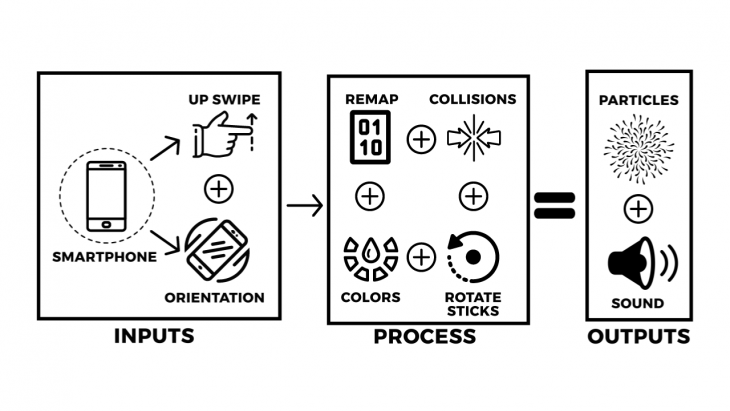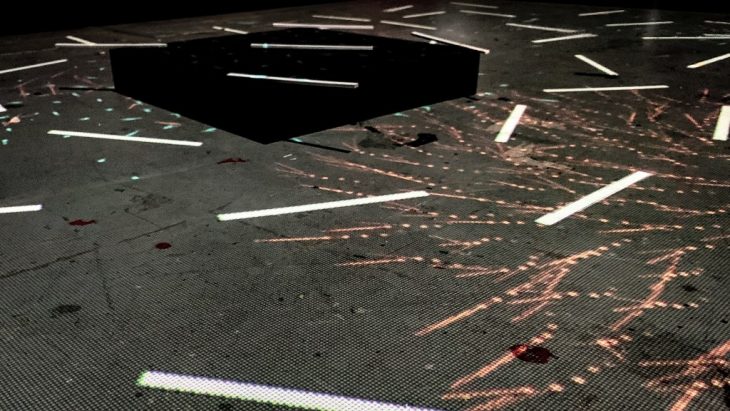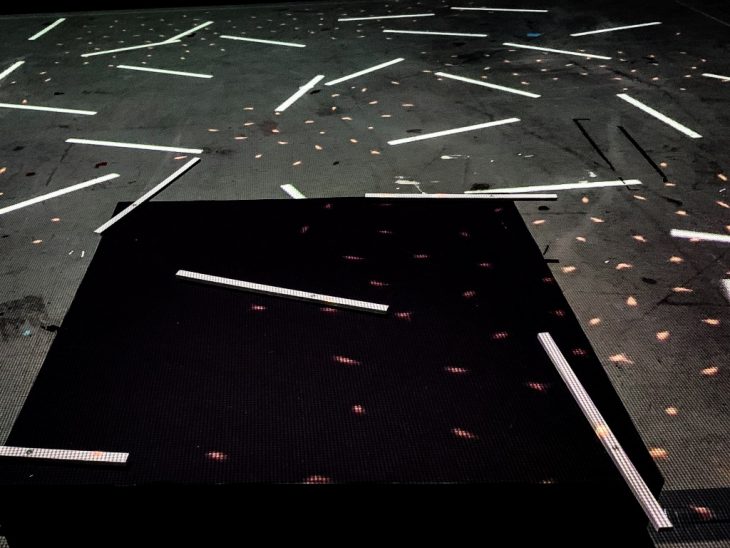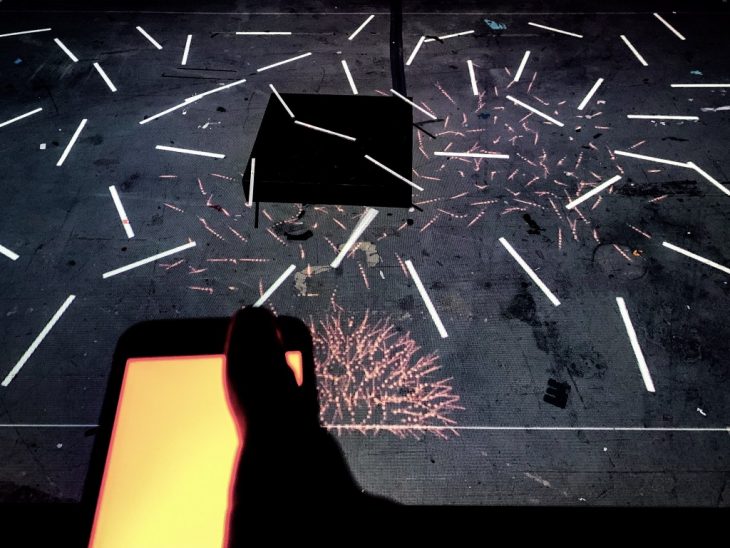Living shapes
In nature plants, creatures and other organism respond to the changes of the environment they live in. These changes you can see in the various patterns they make. Based on these natural behaviors we had to choose one material, one type of movement (mechanism) and one actuator to create a dynamic structure by multiplying the same simple system.
The project pandemonium shows the difference between a movement of particles that interact with sticks in a physical and digital way.
Particles are brought on to the digital and physical interface on the floor by connecting a phone with application to the device. With this application you can shoot the particles into the interface.
The movement of the finger on the phone corresponds to the amount, speed and direction of particles that are shooting into the interface. These particles that are brought into the digital and physical space will create a rotation to the intersecting sticks. The speed and direction of this rotation depends on the speed and direction of the particles and therefore how the users ‘play’ with it. The pandemonium is able to ‘play’ with four users at the same time. Every user has its own color particles wherefore the user can follow its path and influence on the interface.
The pandemonium is a scalable and adaptable device. By duplicating the projection, it is possible to reach a bigger digital interface on the floor that is fully interactive with its users. Also it is possible to place the pandemonium on other flat objects such as a wall, sealing or façade.
Technical Description
INPUT
The Tramontana app on the smartphone gives Processing access to the accelerometer of the phone and also information of how the user interacts with the touchscreen. Each phone/client is assigned a particular color displayed on the screen.
The yaw value retrieved from the accelerometer of the phone is used to define the source of the particles.The vertical distance between the point the user touched down on the screen and the point they released defines the number of particles and velocity.
PROCESS
The particles are initiated at eight different locations along the edge and move towards the centre. We then check the distance between the particles and sticks and look for intersections. As they intersect with the sticks we check for the velocity of particles and proportionately control the angular speed of the sticks. The angular speed of the sticks representing the five physical ones are relayed to the servo motors via Arduino using Firmata communication.
OUTPUT
As feedback for the user, everytime the user swipes up, the phone vibrates and the brightness of the color is changed depending on the distance swiped.
We also use the phone’s information to play notes on Ableton to create sounds, orientation defines which notes are played and distance controls the strength of the note.
So this way as the user moves around the installation and swipes up on the screen, they see particles of the specified color that are emitted approximately from their location while creating sounds corresponding to their positions.




Pandemonium is a project of IAAC, Institute for Advanced Architecture of Catalonia, developed as part of the SE.5 Physical Computing at the Masters in Advanced Architecture in 2018/19 by:
Students: Kammil Steven Carranza Vivas, Vinay Khare, Kristine Kuprijanova, Axel van der Vegte, Yimeng Wei
Faculty: Angel Munoz, Cristian Rizzuti